"Routine professional drain cleaning and maintenance can prevent costly problems from occurring." Clogged drains can be really stressful, causing slow water drainage, unpleasant odors, and even potential flooding. That is why maintaining a clean and functional drainage system is crucial for any household or business. Routine professional drain cleaning service and timely repairs can prevent small issues from escalating into costly disasters. Understanding the causes of blockages and implementing preventative drain cleaning measures can save you time, money, and hassle. Common Causes of Drain BlockagesTo effectively clean and maintain your drains, it's important to understand the common causes of blockages. Here are some of the usual culprits:
Tips for Effective Drain Cleaning and RepairRegular cleaning can prevent most drain-related issues in your kitchen sinks, toilets, and bathrooms. Here are some tips on how to keep your drains clean and functional: Practice Regular Drain Maintenance Proper maintenance is key to preventing major drain problems. These simple practices can help keep your drains in good condition:
"Regular cleaning will prevent blockages forming." Use Natural Cleaning Solutions Commercial drain cleaners can be harsh and potentially damaging to your home plumbing system. Try these natural solutions instead:
Having the right tools can make a big difference when it comes to drain cleaning:
Preventive Measures for Drain MaintenancePreventing blockages is much easier than dealing with them. By taking a few simple steps, you can keep your drains clear and avoid major plumbing issues. 1. Use Drain Screens Install drain screens or strainers in sinks and showers to catch hair, food particles, and other debris. These simple devices can prevent a lot of material from entering your plumbing system and causing clogs. "Drain screens in the kitchen will prevent food scraps going into the drains where they could cause a blockage." 2. Dispose of Grease Properly Don’t pour grease and fat down the drain. These substances can solidify and create blockages. Instead, put them in a container and dispose of them in the trash. 3. Be Mindful of What Goes Down Your Drain Dispose of food scraps, coffee grounds, and other waste in the trash or compost, not the drain. This simple practice can prevent many common blockages. 4. Regular Maintenance Perform regular maintenance on your drains, such as using enzyme cleaners monthly and checking for early signs of blockages. Enzyme cleaners break down organic material in your pipes, keeping them clear. 5. Anual Inspections Schedule annual inspections with your local plumber to ensure your drainage system is in good condition. Experts can recognize and address potential issues before they become major problems. When to Call a Professional PlumberWhile many drain cleaning tasks can be handled by homeowners, certain situations require professional assistance, such as: 1. Persistent Clogs If your drains constantly clog despite regular maintenance and cleaning efforts, there could be a deeper issue that requires expert inspection. Persistent clogs can indicate a more serious issue, such as tree roots growing into or damaging your pipes. 2. Foul Odors Persistent unpleasant smells from your drains can indicate a buildup of waste or a more serious problem like a sewer line issue. A professional drain cleaner can diagnose and fix the problem, eliminating the odors. 3. Slow Drainage Slow-draining water can be a sign of a significant blockage or pipe damage. Your local plumbing company can diagnose and fix the problem efficiently, restoring your drains to proper function. 4. Water Backups Water backups into your sinks, tubs, or toilets is a sign of a major blockage. This issue requires immediate professional attention to prevent further damage and potential health hazards. 5. Recurring Issues If clogs keep coming back, an experienced plumbing technician can identify and fix the underlying cause. Recurring clogs often indicate a deeper issue that needs to be addressed. "While many drain cleaning tasks can be handled by homeowners, certain situations require professional plumbers." Schedule Your Drain Inspection TodayRegular maintenance and professional inspections ensure your drainage system remains efficient and trouble-free. So start implementing these preventive measures today to keep drains flowing freely and your plumbing in good shape. A little effort now will save you from a lot of headaches and expenses in the future. More plumbing tips if you're renovating or building a new home: Staging plumbing and electrical when building and renovating houses Home Hot Water Systems AuthorJanine Kyle is a content specialist at My Biz Niche, helping brands create informative and engaging content that resonates with their audiences. This article is a guest post and the owners of this website take no responsibility for the content or it's originality. The website publishes this article in good faith with the undertaking from the author and supplier that the content has not been plagiarised. Please report any errors in the article to the website owners. Should you prove the content is not original the article will be immediately taken down. Want more expert advice to help you design, build and renovate your homePaul Netscher has written 2 easy to read books 'An Introduction to Building and Renovating Houses - Volumes 1 and 2'. An Introduction to Building and Renovating Houses Volume 1 deals with Hiring Contractors, Managing Construction and Finishing Your Home. and Designing your ideal home Volume 2 deals with Finding Your Ideal Property and Designing Your Dream Home. ("Great for those that DIY. Very helpful in home renovations!" said a Reader on Amazon.com 5*****) These books are available from Amazon and other online bookstores in paper and ebook. Note: We welcome genuine comments, especially comments that add additional information to the subject matter in the article. We however reserve the right to remove inappropriate comments, which includes comments that have nothing to do with the subject, comments that include inappropriate language, and comments that are an advertisement for a product or company, or which include an advertising link. Only comments in English will be accepted. We will not enter into discussion on why a particular comment was removed.
0 Comments
"If you're renovating your home or just making a few updates, staying on top of the project is important to avoid stress." Dealing with building and renovation delays before a move can be tough. If you're renovating your home or just making a few updates, staying on top of the project is important to avoid stress. Here’s a quick guide to managing these challenges easily. Start by setting a clear timeline. Make sure both your construction crew and moving team know the schedule. Keeping everyone in the loop helps prevent conflicts and keeps your move running smoothly. Next, always have a Plan B. Whether renting a storage unit or arranging a temporary place, being prepared for surprises keeps you in control. Lastly, learn about what typically causes delays, like bad weather or supply issues, to plan around them. This foresight allows you to manage construction delays during relocation more effectively. The Impact of Construction Delays on Relocation Plans When construction delays hit your relocation plans, everything can get thrown off track. Suddenly, you’re faced with rescheduling everything from movers to service disconnections, which can mess up your budget and logistics. For instance, if you can't move into your new place on time, you might incur additional costs for temporary housing or storage fees for your belongings. This unexpected expense can strain your budget further, especially if you're already stretched thin with the move. Will your home build project finish on time "Stay flexible and keep the lines of communication open with all parties involved to handle these disruptions effectively." It's important to stay flexible and keep the lines of communication open with all parties involved to handle these disruptions effectively. Regular updates and clear communication can help ease potential bumps by allowing you to adjust plans as needed quickly. This proactive approach minimizes stress and enables you to manage delays' financial impact, ensuring that your relocation progresses as easily as possible despite unforeseen challenges. Good communication with your building contractors is vital Effective Storage Solutions During Unplanned Delays When construction delays clash with your moving timeline, finding a place to store your belongings securely becomes a priority. One effective solution is on-site storage containers. These units can be placed directly at your current or new home, offering easy access to your items while shielding them from damage during renovations. On-site storage provides a buffer against construction chaos and simplifies managing your belongings. You can sort, store, or retrieve items as needed without the hassle of traveling to a remote storage facility. This flexibility is crucial when you are juggling multiple tasks during a move. To make the most of these containers, consider tips for efficient on-site storage during home renovations, which emphasize maximizing space and ensuring the safety of your items. This approach helps keep your relocation process smooth and stress-free despite unexpected delays. Seamless Coordination with Your Moving Company When facing construction delays during a move, keeping in touch with your moving company is key. As soon as you hear about a delay, let them know. That gives them time to adjust their schedules and make sure they have everything lined up for when you're ready to go. Keep the communication lines open by regularly updating your moving company about the situation. This way, you and the movers can stay on the same page and tackle any changes head-on. This ongoing dialogue reduces downtime, saving you stress and money. Also, make sure to get any changes to your moving plan in writing. A written record ensures everyone agrees on the details and protects your interests during the move. You can effectively manage construction delays during relocation by staying proactive and clear, keeping your move easy and on track. This approach eases your mind and helps ensure everything goes as planned. "Keeping in touch with the moving company is key to a successful move when facing a delay." Proactive Project ManagementIt's important to monitor the progress of your construction project closely. Delays can derail your schedule, so a realistic approach is often better than an overly optimistic one. Regular checks keep you on top of any issues that might arise, allowing for swift action. Common Issues Faced when Monitoring Contractors Be especially vigilant as you near project completion. The last 10% of construction often takes unexpectedly longer due to detailed tasks like final inspections and finishing touches. Adjust your expectations and timeline to accommodate this reality, which will help prevent last-minute rushes. "A construction schedule helps keep everyone coordinated and working to a common completion date." If your project is complex, consider hiring an architect. An architect can ensure that your construction meets design and functionality goals, aligning with your moving schedule. Their expertise can be invaluable in steering the project toward timely completion, making your move smoother and less stressful. Strategies to Mitigate Disruption Managing construction delays during your move doesn’t have to throw off your schedule. Here’s what you can do to keep things moving easily:
Coordinating contractors on your home building project Tips to manage Construction Delays During Relocation Easy When construction delays mess with your moving plans, it’s all about staying prepared and flexible. The key? Keep everyone looped in with regular updates, from your builders to your movers. That stops any surprises from throwing your schedule off track. It's smart to have a backup plan, too. Also, hiring a reliable moving company can help you manage construction delays during relocation. Maybe set an alternative moving date, just in case. This bit of flexibility can cut down on stress if construction takes longer than expected. Plus, being prepared for any hiccups helps keep your move easy. With these strategies, you can handle construction delays without breaking a sweat. So, take these tips to heart, plan well, and keep communication open. Your move will go a lot easier, no matter what comes up. Important Tips to Make Moving into Your Newly Constructed Home Successful AuthorChris Donovan is a blog writer who collaborates with preferred-movers.com, a leading moving company known for providing reliable and efficient relocation services. He specializes in creating clear and accessible content to guide readers through their moving experiences. His articles offer practical tips and the latest industry updates, all aimed at making the relocation process easier for everyone. This article is a guest post and the owners of this website take no responsibility for the content or it's originality. The website publishes this article in good faith with the undertaking from the author and supplier that the content has not been plagiarised. Please report any errors in the article to the website owners. Should you prove the content is not original the article will be immediately taken down. Want more expert advice to help you design, build and renovate your homePaul Netscher has written 2 easy to read books 'An Introduction to Building and Renovating Houses - Volumes 1 and 2'. An Introduction to Building and Renovating Houses Volume 1 deals with Hiring Contractors, Managing Construction and Finishing Your Home. and Designing your ideal home Volume 2 deals with Finding Your Ideal Property and Designing Your Dream Home. ("Great for those that DIY. Very helpful in home renovations!" said a Reader on Amazon.com 5*****) These books are available from Amazon and other online bookstores in paper and ebook. Note: We welcome genuine comments, especially comments that add additional information to the subject matter in the article. We however reserve the right to remove inappropriate comments, which includes comments that have nothing to do with the subject, comments that include inappropriate language, and comments that are an advertisement for a product or company, or which include an advertising link. Only comments in English will be accepted. We will not enter into discussion on why a particular comment was removed.
Creating a useful and aesthetically appealing domestic office is more critical than ever, especially with many of us working from home. But a home office can equally be important for a place to keep your personal paperwork, or even a quiet space to read or pursue a hobby. Here, we explore the important thing portions of fixtures wanted for an excellent domestic workplace and provide suggestions for putting in your space efficaciously. The Perfect Desk for Your Home OfficeYour desk is the center piece of your own home office. When selecting a desk, don't forget the following:
Ergonomic Chair The right chair is vital for maintaining comfort and preventing returned ache throughout lengthy work hours. Key functions to look for encompass:
Storage Solutions for Home OfficesEffective storage systems are essential for maintaining your workplace organized where you can easily find what you are looking for. Sufficient storage should also ensure that important documents are not misplaced. Having an untidy workspace wastes time while you search for documents.
Where possible have shelves and cupboards built in. This looks neater, should save space, and there's less risk of loose bookcases and cupboards toppling over. You may require some storage to be lockable for confidential documents. 7 Creative Storage Ideas for Your Home Home Office LightingProper lighting fixtures can reduce eye stress and enhance your office. Combine specific varieties of lighting fixtures for the best results:
Technology and AccessoriesEquip your house workplace with the right accessories to make work and life easier:
Personal TouchesFinally, customize your workplace to make it an appealing space. Add:
Create a Pleasing Home OfficeDesigning an appropriate home office entails deciding on the proper furniture and arranging it in a manner that promotes productivity and luxury. By investing in a exceptional desk and office chair, ensuring the right lights, and including private touches, you could create a workspace that meets your needs and evokes your best work, and a space that should add value to your home. 7 Home Office Remodeling Tips for a Productive Space AuthorLucy Jones is a Business Advisor. She shares her tips on business and marketing. With extensive research and study, Lucy passionately creates blogs on divergent topics, including reviews on office chair. This article is a guest post and the owners of this website take no responsibility for the content or it's originality. The website publishes this article in good faith with the undertaking from the author and supplier that the content has not been plagiarised. Please report any errors in the article to the website owners. Should you prove the content is not original the article will be immediately taken down. Want more expert advice to help you design, build and renovate your homePaul Netscher has written 2 easy to read books 'An Introduction to Building and Renovating Houses - Volumes 1 and 2'. An Introduction to Building and Renovating Houses Volume 1 deals with Hiring Contractors, Managing Construction and Finishing Your Home. and Designing your ideal home Volume 2 deals with Finding Your Ideal Property and Designing Your Dream Home. ("Great for those that DIY. Very helpful in home renovations!" said a Reader on Amazon.com 5*****) These books are available from Amazon and other online bookstores in paper and ebook. Note: We welcome genuine comments, especially comments that add additional information to the subject matter in the article. We however reserve the right to remove inappropriate comments, which includes comments that have nothing to do with the subject, comments that include inappropriate language, and comments that are an advertisement for a product or company, or which include an advertising link. Only comments in English will be accepted. We will not enter into discussion on why a particular comment was removed.
'Some simple plumbing changes can save you money." These days, many homeowners are looking for ways to make their homes more eco-friendly. Your home's plumbing system is often overlooked. But by making a few simple changes, you can actually reduce your water and energy use, save money on utility bills, and even increase your home's value. In this blog, we'll explore how to make your home more sustainable through better plumbing practices. Sustainable Pipe MaterialsThe materials used in your plumbing system can also contribute to its overall sustainability. PEX piping is flexible, durable, and cost-effective compared to copper or metal pipes. PEX requires fewer resources to manufacture, is resistant to corrosion and scaling, and can last for decades, reducing the need for frequent replacements. Cast iron pipes are another sustainable option, offering unparalleled durability and the ability to be recycled at the end of their lifespan. Low-Flow FixturesInstalling low-flow fixtures stands out as one of the simplest and most impactful methods to make your plumbing eco-friendlier. These include faucets, showerheads, and toilets that use significantly less water than traditional models without compromising performance. Low-flow toilets can significantly reduce water usage, while low-flow showerheads and faucets also contribute to saving water. By reducing water waste, these fixtures help conserve a precious natural resource while lowering your utility bills. "Low flow fittings can save money without adding inconvenience." Tankless Water HeatersTraditional water heaters constantly maintain a tank of hot water, even when not in use, resulting in energy waste. Tankless water heaters heat water on demand, ensuring a continuous supply of hot water while significantly reducing energy consumption. These small, wall-mounted units require less space than traditional heaters. They have a lifespan of up to 20 years, making them a wise long-term investment. "Tankless water heaters save money and take less space." Greywater SystemsGreywater systems are an innovative way to reuse wastewater from sinks, showers, and washing machines for irrigation or flushing toilets. Greywater systems reduce water use by redirecting clean water from sinks, showers, and washing machines away from the sewer or septic system. This helps reduce the burden on municipal water treatment facilities. While installation can be complex and may require permits, greywater systems are an excellent option for homeowners looking to maximize water efficiency. How to make your home green and environmentally friendly and save money Rainwater Harvesting SystemsRainwater harvesting systems collect and store rainwater for everyday uses, such as watering your garden, flushing toilets, and doing laundry. By using rainwater, you can reduce your reliance on the city's water supply and help prevent flooding. This system is especially useful in areas that experience frequent droughts. "Use rainwater for your garden." Preventive MaintenanceRegular maintenance is key to keeping your plumbing system running efficiently and preventing costly leaks. Homeowners should routinely check for dripping faucets, running toilets, and other signs of leaks, as even small drips can waste thousands of gallons of water each year. By insulating hot water pipes, you can retain water temperature and decrease the energy required for reheating. Using eco-friendly drain cleaners and avoiding pouring grease down the sink can also help maintain a sustainable plumbing system and prevent plumbing leaks. Also, incorporating these eco-friendly practices into a construction project can greatly enhance the overall sustainability of the building. "Leaking taps cost you money.' Sustainable Plumbing Practices for a Greener FutureImplementing eco-friendly plumbing solutions reduces environmental impact and cuts utility bills while increasing home value. These practices are crucial amidst global challenges like water scarcity and climate change. Adopting sustainable plumbing is essential for creating a greener, more resilient future worldwide. By conserving water and energy, homeowners contribute positively to environmental sustainability and reduce their carbon footprint. Bathroom Design Essentials - What You Should Consider When Designing, Building and Renovating Your Ultimate Bathroom - Part 1 AuthorKhristal Asoque is a content writer in My Biz Niche, crafting informative pieces that captivate the readers. With a knack for storytelling, she brings a fresh perspective and provides educational content to every topic she explores. This article is a guest post and the owners of this website take no responsibility for the content or it's originality. The website publishes this article in good faith with the undertaking from the author and supplier that the content has not been plagiarised. Please report any errors in the article to the website owners. Should you prove the content is not original the article will be immediately taken down. Want more expert advice to help you design, build and renovate your homePaul Netscher has written 2 easy to read books 'An Introduction to Building and Renovating Houses - Volumes 1 and 2'. An Introduction to Building and Renovating Houses Volume 1 deals with Hiring Contractors, Managing Construction and Finishing Your Home. and Designing your ideal home Volume 2 deals with Finding Your Ideal Property and Designing Your Dream Home. ("Great for those that DIY. Very helpful in home renovations!" said a Reader on Amazon.com 5*****) These books are available from Amazon and other online bookstores in paper and ebook. Note: We welcome genuine comments, especially comments that add additional information to the subject matter in the article. We however reserve the right to remove inappropriate comments, which includes comments that have nothing to do with the subject, comments that include inappropriate language, and comments that are an advertisement for a product or company, or which include an advertising link. Only comments in English will be accepted. We will not enter into discussion on why a particular comment was removed.
"Home renovations can be disruptive and it is often necessary to move to temporary accommodation while renovations are under way." Renovating your home can be both an exciting and daunting experience. The process often brings anticipation for a fresh living space, yet it can significantly disrupt daily life. One of the primary challenges is finding suitable temporary housing solutions. Fortunately, various unique and practical options are available to help you easily navigate this period. Exploring Local Short-Term Rental OptionsLocal short-term rentals offer a convenient and comfortable solution during home renovations. These rentals, such as furnished apartments or condos, can provide a home-like environment that allows you to maintain your routine with minimal disruption. To find reliable short-term rentals, consider using reputable websites like Airbnb and Booking.com or contacting local real estate agents specializing in temporary housing. The benefits of short-term rentals include flexibility in terms of lease duration and, often, a fully furnished living space that reduces the hassle of moving your belongings. However, it's essential to weigh the pros and cons. While these rentals provide convenience and comfort, they may cost more. Also, availability can vary based on your location and the timing of your renovation. Will your home build project finish on time Recreational Vehicles for Mobile ComfortLiving in a recreational vehicle (RV) can provide unparalleled flexibility and comfort during a home renovation. RVs have amenities like kitchens, bathrooms, and sleeping areas, making them self-contained temporary housing options. This mobility lets you stay close to your renovation site or explore new places until your home is move-in ready. "Most rvs and caravans come with all the amenities, although it can be compact living which is not suited to everyone for a lengthy stay." When choosing an RV, consider size, amenities, and rental costs. It's also important to plan for parking and adhere to local legal requirements. The key benefits of living in an RV include flexibility, cost savings, and the adventure of mobile living. Nevertheless, space limitations and the need for regular maintenance can be challenging. Utilizing Extended Stay HotelsExtended-stay hotels are an excellent choice for those seeking a balance between hotel amenities and home comfort. These hotels cater to guests needing accommodation for weeks or even months. They typically offer kitchen facilities, laundry services, and housekeeping, making them a practical option during a lengthy renovation. Finding the best deals and locations for extended-stay hotels can be done through travel websites like Expedia. Likewise, you can research hotel chains known for extended stays. The key advantages of these hotels include flexibility in booking durations, comprehensive services, and the benefit of not having to worry about utilities and maintenance. However, they can be pricier than other temporary housing solutions. Staying with Friends or FamilyStaying with friends or family can be a supportive and cost-effective temporary housing solution. This option provides loved one's emotional support and significantly reduces housing costs. However, it's important to consider the potential for space constraints and the duration of your stay to avoid straining relationships. "Staying with friends and family for short durations can be enjoyable if there's space for everyone. Lengthy stays and cramped conditions can often lead to arguments and stress." To maintain harmony while staying with friends or family, establish clear communication about expectations, share household responsibilities, and respect their space and routines. This arrangement can be highly beneficial, offering a familiar and comforting environment during the upheaval of renovation. Considering Long-Term RentalsLong-term rentals provide a stable and hassle-free temporary housing solution during extensive home renovations. Opting for a long-term rental, such as signing a lease for six months to a year, ensures a consistent living arrangement without frequent moves. These rentals often come unfurnished, allowing you to personalize the space with your belongings and make it feel like home. Long-term rentals can be found through local real estate agents or rental websites that cater to your area. Although this option may require a longer commitment, it offers stability and is often more cost-effective than short-term or extended-stay alternatives. Moreover, long-term rentals can provide a greater sense of community and normalcy, which can be particularly beneficial during the upheaval of home renovations. "Long term rentals are best suited to extended renovations." Utilizing Co-Living Spaces for a Community ExperienceCo-living spaces offer a unique and community-focused temporary housing solution during extensive renovations. Co-living involves renting a private room within a shared apartment or house, where common areas such as kitchens, living rooms, and sometimes even workspaces are shared with other residents. This option is particularly popular in urban areas worldwide and provides an excellent opportunity to meet new people and network. Co-living spaces often come fully furnished, include utilities, and offer a range of amenities such as cleaning services, Wi-Fi, and social events. Co-living's benefits include lower costs than renting an entire apartment, a built-in community, and flexible lease terms. However, it requires a certain level of adaptability and willingness to share spaces with others. Co-living can be a rewarding and practical temporary housing solution for those who thrive in social environments. Combining Multiple Solutions for FlexibilityFlexibility is essential during extensive home renovations, and combining multiple temporary housing options can provide the best of all worlds. For instance, you might start by staying with friends or family and then move to an extended-stay hotel as your renovation progresses. "Repeated packing and moving can be tiresome." Combining different solutions allows you to adapt to changing circumstances and find the most comfortable and cost-effective arrangements. Real-life examples include families initially staying in vacation rentals before transitioning to RVs. This approach requires careful planning and coordination but can lead to a more pleasant renovation experience. Budgeting for Temporary Housing While RenovatingBudgeting for temporary housing is essential to manage expenses effectively. Each housing option comes with its own costs, from rental fees to utility payments. It’s important to create a budget that accounts for these variables and to explore affordable options within your means. Consider using cost comparison tools and negotiating rental rates when possible to manage costs. Have you allowed for all the costs of your new home build? Part 1 Poor Choices of Accommodation While Renovating Adds to the StressFinding the right temporary housing solutions during a home renovation is important for maintaining comfort and reducing stress. You can find a solution that fits your needs and budget by exploring local short-term rentals, extended-stay hotels, RV living, and staying with friends or family. Combining different solutions and budgeting will also help you easily navigate this challenging time. 10 Tips to Help Couples Survive a Home Renovation Project AuthorJane Smith is a seasoned writer with over a decade of experience. As a key member of NYC Mini Storage, a company offering practical self-storage solutions in NYC, Jane has helped countless families and businesses find storage solutions to feed every need. This article is a guest post and the owners of this website take no responsibility for the content or it's originality. The website publishes this article in good faith with the undertaking from the author and supplier that the content has not been plagiarised. Please report any errors in the article to the website owners. Should you prove the content is not original the article will be immediately taken down. Want more expert advice to help you design, build and renovate your homePaul Netscher has written 2 easy to read books 'An Introduction to Building and Renovating Houses - Volumes 1 and 2'. An Introduction to Building and Renovating Houses Volume 1 deals with Hiring Contractors, Managing Construction and Finishing Your Home. and Designing your ideal home Volume 2 deals with Finding Your Ideal Property and Designing Your Dream Home. ("Great for those that DIY. Very helpful in home renovations!" said a Reader on Amazon.com 5*****) These books are available from Amazon and other online bookstores in paper and ebook. Note: We welcome genuine comments, especially comments that add additional information to the subject matter in the article. We however reserve the right to remove inappropriate comments, which includes comments that have nothing to do with the subject, comments that include inappropriate language, and comments that are an advertisement for a product or company, or which include an advertising link. We will not enter into discussion on why a particular comment was removed.
We live in a world where environmental concerns are increasingly crucial, and it is essential to take every possible step towards energy efficiency. Although we often pay attention to optimizing energy usage inside our homes, one area that is frequently disregarded is the garage. Garage can play a significant role in energy conservation, and a crucial element in this is the often ignored hero, the energy-efficient garage door. Let's shine a light on the importance of an energy-efficient garage door and its positive impact on the environment and your pocket. Understanding Energy-Efficient Garage DoorsEnergy-efficient garage doors are not just an aesthetic choice for homeowners. They are a smart investment that can significantly benefit your home's comfort and energy bill. These doors are designed with advanced materials and technologies that provide superior insulation, which can help maintain a comfortable temperature inside the garage and reduce energy consumption. The insulation of energy-efficient garage doors helps prevent heat transfer between the inside and outside of the garage. It means that the garage can stay warmer during winter and cooler during summer without relying too much on heating or cooling systems. As a result, homeowners can save money on their energy bills and reduce their carbon footprint. Moreover, energy-efficient garage doors can also enhance the durability and security of your home. These doors are typically made with high-quality materials that can withstand harsh weather conditions, such as heavy rain, wind, hail, or extreme temperatures. Additionally, some models come equipped with smart technologies that allow you to monitor and control your garage door remotely, providing an extra layer of security for your home. "Garage doors are an important layer in the security of your home." Benefits of Energy-Efficient Garage DoorsEnergy-efficient garage doors offer a multitude of advantages. Apart from enhancing both the economic and environmental aspects of homeownership, here are the advantages of having an energy-saving garage.
"If you are going to be working in your garage you want to do so in a comfortable temperature." Types of Energy-Efficient Garage DoorsChoosing the right material and technology for your garage door is crucial. Here, we provide an overview of the different types available, weighing the pros and cons of each. Wood Garage Doors
"Wooden garage doors can look good and add insulation, but they require regular maintenance." DIY Energy-Efficiency Boosters for Garage DoorsHomeowners can also improve the energy efficiency of their garage doors with these DIY tips for better insulation and sealing without the need for professional assistance. Here's how:
Future Trends in Energy-Efficient Garage DoorsDo you wonder what the future holds for energy-efficient garage doors? Here are emerging technologies and innovations that are shaping the next generation of sustainable garage doors.
The Right Garage Door can Look Good and Save You MoneyAfter exploring energy-efficient garage doors, it's clear that they're not just a modern trend but a necessity for homeowners. These doors can help save money, reduce environmental impact, and promote a sustainable lifestyle. Though the initial investment may seem high, the long-term benefits outweigh the costs, making energy-efficient garage doors a wise and responsible choice. More ways to make your home environmentally friendly How to make your home green and environmentally friendly and save money AuthorAuthor Bio: Irene Trentham is the Content Marketing Strategist of Overhead Door Company of Maricopa - Pinal County, a reputable company known for its high-quality and reliable garage door installation and repair services in Arizona. This article is a guest post and the owners of this website take no responsibility for the content or it's originality. The website publishes this article in good faith with the undertaking from the author and supplier that the content has not been plagiarised. Please report any errors in the article to the website owners. Should you prove the content is not original the article will be immediately taken down. Want more expert advice to help you design, build and renovate your homePaul Netscher has written 2 easy to read books 'An Introduction to Building and Renovating Houses - Volumes 1 and 2'. An Introduction to Building and Renovating Houses Volume 1 deals with Hiring Contractors, Managing Construction and Finishing Your Home. and Designing your ideal home Volume 2 deals with Finding Your Ideal Property and Designing Your Dream Home. ("Great for those that DIY. Very helpful in home renovations!" said a Reader on Amazon.com 5*****) These books are available from Amazon and other online bookstores in paper and ebook. Note: We welcome genuine comments, especially comments that add additional information to the subject matter in the article. We however reserve the right to remove inappropriate comments, which includes comments that have nothing to do with the subject, comments that include inappropriate language, and comments that are an advertisement for a product or company, or which include an advertising link. We will not enter into discussion on why a particular comment was removed.
"The right house, in the right place, at the right price, with some smart changes can become a very profitable investment of your time and money." House flipping isn't just a young person's game. In fact, for seniors looking to invest their time and resources wisely, flipping houses presents an exciting opportunity to generate substantial income while applying a lifetime of skills and experience. Whether you're interested in a post-retirement project or simply looking to diversify your investments, the world of real estate offers both challenges and rewards. This guide outlines essential strategies and tips for embarking on house flipping, ensuring you succeed and enjoy transforming properties. 7 Tips for Home Renovation on a Budget Start with Small Renovation ProjectsWhen diving into house flipping, you should start with a modest project. Smaller-scale flips are less overwhelming and can provide a gentle introduction to the nuances of this business. Focusing on a manageable property allows you to hone your renovation skills and understanding of market dynamics without the stress of a high-stakes investment. This approach helps mitigate risk, allowing you to learn from the process and build confidence for future, larger projects. "Sometimes small changes can make a big impact and create value." Education is ImportantWhether doing construction work yourself or employing contractors it's important to understand the basics of construction trades. Consider attending trades courses such as carpentry, tiling, painting, and more. Unfortunately, many building projects are undone by poor workmanship, which costs money and takes time to fix, and often devalues the final project. Of course, if you are employing contractors, it's important to learn about construction management. There are project management courses you can attend. But even reading the articles on this website will teach you what to look for when managing your construction project. Sharpening your business and financial skills is important. As to understanding contracts and contract law. Home build and renovation contracts part 1 - what you should know "There are many books that provide valuable information and insights into home renovations and will help you achieve a successful project." Find the Right Property to FlipThe success of your house-flipping venture largely depends on the property's location. Investing time in researching neighborhoods exhibiting signs of growth and development is crucial. Look for areas with increasing property values, new construction, and improving infrastructure, as these factors typically attract buyers. Selecting the right neighborhood increases your chances of a lucrative flip and reduces the time your property sits on the market. Leverage Technology for a more Successful ProjectIn today's digital age, various apps and technological tools are available to streamline project management and financial tracking in house flipping. Utilizing these resources can simplify scheduling, budgeting, and collaborating with contractors. Technology saves time and increases accuracy in budget forecasts and renovation timelines, enabling more precise project management. How Apps Can Simplify Your DIY Home Projects Secure your DocumentationAs a house flipper, it's crucial to maintain all essential housing documents securely and organized. Converting these documents into PDFs through scanning ensures their preservation and ease of access. Optical character recognition (OCR) technology enables you to edit and distribute your PDFs effectively for adjustments or updates to these files. Plan Your Renovations ThoroughlyUnderstanding and accepting the time commitment required for successful house flipping is vital. This business is not merely about making quick fixes and selling for profit; it involves thorough planning, renovation, and sometimes unforeseen delays. Having a clear perspective on project duration helps set realistic timelines and expectations, which is crucial for maintaining both schedule and budget. Acknowledging this commitment also prepares you for the demands of the process, helping you manage stress and maintain project momentum. ConclusionVenturing into house flipping can be satisfying and profitable for those who tackle it with the appropriate mindset and resources. This activity leverages your vast experience while promoting ongoing learning and adaptability. How to save money when building or renovating your home As you manage each project, from acquiring the ideal property to implementing a comprehensive renovation strategy, you participate in an intellectually rewarding process with the potential for significant financial returns. House flipping transcends mere real estate investment; it constitutes an investment in your skills and future, offering a substantial and fulfilling method to enhance your later years. Renovating homes for profit - what you should consider AuthorAbby created Craftability to inspire you to put your own crafting abilities to good use, whether it’s painting, jewelry-making, quilting, or calligraphy. This article is a guest post and the owners of this website take no responsibility for the content or it's originality. The website publishes this article in good faith with the undertaking from the author and supplier that the content has not been plagiarised. Please report any errors in the article to the website owners. Should you prove the content is not original the article will be immediately taken down. Want more expert advice to help you design, build and renovate your homePaul Netscher has written 2 easy to read books 'An Introduction to Building and Renovating Houses - Volumes 1 and 2'. An Introduction to Building and Renovating Houses Volume 1 deals with Hiring Contractors, Managing Construction and Finishing Your Home. and Designing your ideal home Volume 2 deals with Finding Your Ideal Property and Designing Your Dream Home. ("Great for those that DIY. Very helpful in home renovations!" said a Reader on Amazon.com 5*****) These books are available from Amazon and other online bookstores in paper and ebook. Note: We welcome genuine comments, especially comments that add additional information to the subject matter in the article. We however reserve the right to remove inappropriate comments, which includes comments that have nothing to do with the subject, comments that include inappropriate language, and comments that are an advertisement for a product or company, or which include an advertising link. We will not enter into discussion on why a particular comment was removed.
"Good planning will ensure your belongings are protected when living in a house you are renovating." Home renovations can be exciting and stressful, especially when managing clutter and maintaining organization on-site. One of the key aspects of a successful renovation project is efficient on-site storage. Proper storage solutions keep your workspace tidy and ensure that your belongings remain safe and easily accessible throughout the renovation process. Here are some valuable tips to help you optimize your on-site storage during home renovations. Renovate, Move, or Build a New Home Declutter Before You Begin Your RenovationBefore diving into your renovation project, take the time to declutter your home. Sort through your belongings and decide what you want to keep, donate, or discard. That will make the renovation process more manageable and reduce the number of items you need to store on-site. Clearing out unnecessary clutter will create more space for storage solutions and make it easier to organize your belongings during the renovation. Invest in Portable Storage UnitsConsider renting portable storage units to store your belongings during the renovation. These units can be conveniently placed on your property, providing easy access to your items whenever needed. Portable storage units come in various sizes, allowing you to choose the one that best fits your needs. Ensure they are secure and weatherproof, so your belongings remain protected throughout the renovation process. "A nice shed can even be turned into a permanent feature becoming a garden shed or outdoor room when the renovation is complete." Consider Using External Storage UnitsMost cities have rentable storage units that come in different sizes. Pick one that will suit your needs. For bulky and heavy items you may have to engage a reputable removals company to move the items. Ensure the units are secure and weatherproof. "Storage units come in varying sizes." Create Dedicated Storage ZonesDesignate specific areas of your home as storage zones for different categories of items. For example, designate one area for tools and construction materials, another for furniture and household items, and a separate area for personal belongings. Clearly label each storage zone to make it easy to locate items when needed. Creating dedicated storage zones will help you stay organized and prevent clutter from spreading throughout your home. Opt for Stackable Storage ContainersInvest in stackable storage containers to efficiently utilize space and keep items organized. Choose containers that are transparent or have labels so you can easily identify the contents inside. Stackable containers are ideal for storing smaller items such as hardware, accessories, and seasonal decorations. They can be neatly stacked in corners or closets, keeping your renovation area clutter-free. Protect Fragile ItemsTake extra precautions to protect fragile items such as glassware, ceramics, and electronics during the renovation process. Wrap delicate items in bubble wrap or packing paper before storing them in boxes or containers. Label these boxes as "fragile" to ensure they are handled carefully. Store fragile items in a secure location away from high-traffic areas to minimize the risk of damage. "Carefully wrap, label, and store fragile items. Accidents easily happen on construction sites and things can get knocked and bumped." Secure Valuables Off-SiteFor added peace of mind, consider storing valuable or sentimental items off-site during the renovation. Renting a secure storage unit or utilizing the services of a professional storage facility can provide a safe and climate-controlled environment for your belongings. Store important documents, jewelry, and family heirlooms in a separate location to ensure they remain protected throughout the renovation process. How to Make Your Home Secure When Remodeling and Renovating your Home Label Everything ClearlyProper labeling is essential for maintaining organization during a renovation project. Use clear, legible labels to identify the contents of boxes, containers, and storage bins. Include details such as the room they belong to or the type of items stored inside. This will make it easier to locate specific items when needed and prevent unnecessary rummaging through boxes. "Make it easy to find things so you don't end with a mess." Stay Flexible and Adapt as Your Renovation ProceedsFlexibility is key during home renovations, so be prepared to adapt your storage solutions as the project evolves. As the renovation progresses, you may need to reorganize your storage areas or adjust your storage setup to accommodate changes in the work schedule or project scope. Stay proactive and responsive to any challenges or obstacles, and be willing to make adjustments to ensure that your storage solutions meet your needs effectively. By staying flexible and adaptable, you can maintain a streamlined and organized renovation environment from start to finish. Maintain AccessibilityLastly, ensure that your storage solutions allow easy access to your belongings throughout the renovation process. Avoid stacking items too high or blocking access to essential tools and materials. Keep pathways clear to allow for smooth movement around the renovation area. Regularly assess your storage setup and adjust as needed to maintain accessibility and efficiency. Efficient Storage is Crucial for a Successful Home RenovationEfficient on-site storage is crucial for a successful home renovation project. All these tips will help you optimize your storage solutions and keep your workspace organized. Additionally, they’ll help you ensure that your belongings remain safe, accessible, and well-organized during your home renovation journey. Moving into a Fixer-Upper: Strategies for Renovating Your New Home Room by Room AuthorDavid DePillo is a seasoned mover at harrismovers.ca. This moving and storage company has been in the business for a long time. As a result, David enjoys using his years of experience to write articles that can help streamline people’s moves. This article is a guest post and the owners of this website take no responsibility for the content or it's originality. The website publishes this article in good faith with the undertaking from the author and supplier that the content has not been plagiarised. Please report any errors in the article to the website owners. Should you prove the content is not original the article will be immediately taken down. Want more expert advice to help you design, build and renovate your homePaul Netscher has written 2 easy to read books 'An Introduction to Building and Renovating Houses - Volumes 1 and 2'. An Introduction to Building and Renovating Houses Volume 1 deals with Hiring Contractors, Managing Construction and Finishing Your Home. and Designing your ideal home Volume 2 deals with Finding Your Ideal Property and Designing Your Dream Home. ("Great for those that DIY. Very helpful in home renovations!" said a Reader on Amazon.com 5*****) These books are available from Amazon and other online bookstores in paper and ebook. Note: We welcome genuine comments, especially comments that add additional information to the subject matter in the article. We however reserve the right to remove inappropriate comments, which includes comments that have nothing to do with the subject, comments that include inappropriate language, and comments that are an advertisement for a product or company, or which include an advertising link. We will not enter into discussion on why a particular comment was removed.
"Moving into a new home is exciting, but it's important to get things done right for a successful transition." Moving into a newly constructed home marks the beginning of an exciting journey filled with possibilities and opportunities. It's a significant milestone that symbolizes not just a change of address but a fresh start in a space uniquely yours. As you prepare to start this adventure, it's essential to be equipped with the knowledge and resources necessary to navigate the transition smoothly. From understanding warranty coverage to personalizing your living space, there are various aspects to consider when moving into your newly constructed home. In this guide, we'll explore what to expect and provide valuable insights and tips to help you make the most of this exciting chapter in your life. Understanding Warranty CoverageWhen moving into your newly constructed home, understanding the intricacies of your warranty coverage is paramount. Take the time to go into the details, clarifying what aspects of your home are covered and for how long. This information ensures that you are prepared for any potential issues that may arise in the future. Organization is key—keep all relevant documents in a secure and easily accessible location for future reference. Should the need arise, clearly understanding your warranty coverage can save both time and money. Regularly review your warranty terms to stay informed about your rights and responsibilities as a homeowner. This proactive approach empowers you to address any concerns promptly, safeguarding your investment in your newly constructed home. For more read Building Defects "Understand your rights in terms of your building contract." Ensure utilities are connected to your homeWhen settling into your newly constructed home, arranging for utility setup should be a top priority. Take the initiative to organize these services before your move-in date to ensure a seamless transition. Upon arrival, double-check all utility connections to confirm they are functioning correctly. It's essential to familiarize yourself with the location of utility shutoffs in case of emergencies. Reliable utilities, such as power, water, gas, and the internet, are essential for daily living. To avoid service disruptions, take proactive steps to rectify any concerns or inconsistencies with utility providers. When following these procedures, you will be able to settle into your new house with confidence. What will your new house cost when you are living in it "Failing to connect the power might mean you are celebrating your first night in your new home by the light of candles." Inspecting your new homeInspecting every nook and cranny of your newly constructed home is essential for ensuring its quality and addressing potential issues. Take the time to thoroughly examine the entire property, paying close attention to details. Look out for defects or unfinished work, documenting them promptly to the builder. From structural elements to finishing touches, no aspect should be overlooked. This meticulous approach allows you to identify and rectify any problems early on, preventing them from becoming larger issues down the line. Keep a detailed record of your findings, including photographs and written notes, to facilitate communication with the builder or contractor. "Remember to check all the electrical power points and lights are working." Personalize Your New HomePersonalizing your space is an exciting opportunity to transform your new home into a reflection of your unique style and personality. Take the time to experiment with interior design and decor choices that resonate with you. The possibilities are endless, whether you prefer a minimalist aesthetic, a cozy farmhouse vibe, or a sleek modern look. Consider incorporating meaningful pieces such as family heirlooms, artwork, or souvenirs from your travels to add a personal touch to your living space. Don't be afraid to get creative and think outside the box—after all, your home should be a place where you feel comfortable and inspired. Just keep in mind that you should be careful about the stuff you bring from your old home, as there are items that you should not move long distance. This is because bulky or fragile items can complicate the moving process significantly, so leave some stuff behind if they are not a priority. This will make moving to your new place much easier and enjoyable. Landscaping and Outdoor SpacesLandscaping and outdoor spaces are important in enhancing your newly constructed home's overall appeal and functionality. When planning your landscaping, consider factors such as climate, maintenance requirements, and personal preferences. Whether you opt for a lush garden, a manicured lawn, or a low-maintenance xeriscape, thoughtful design choices can significantly elevate your home's curb appeal. Further, take the time to research suitable plants and materials that are available in your region, ensuring longevity and sustainability. In addition, outdoor amenities such as patios, decks, or outdoor kitchens can extend your living space and provide opportunities for relaxation and entertainment. Revamp Your Outdoor Space with Creative Ideas for Backyard Remodeling Familiarizing Yourself with Your Home's Smart FeaturesFamiliarizing yourself with the smart features of your newly constructed home is essential for maximizing convenience and efficiency. Take the time to explore the functionality of these systems, which may include smart thermostats, lighting controls, security cameras, and more. Understanding how to operate and customize these features according to your preferences allows you to tailor your living environment to suit your needs. Whether it's adjusting the temperature remotely, setting up automated lighting schedules, or monitoring your home's security from your smartphone, smart technology offers unparalleled convenience and peace of mind. Be sure to take advantage of any tutorials or resources provided by the manufacturer to utilize your smart home devices' capabilities fully. With some experimentation and familiarization, you can harness the power of technology to enhance your living experience in your newly constructed home. Add Value to Your Home with Smart Home Improvements Safety First: Installing Security Measures Into Your New HomeEnsuring the safety and security of your newly constructed home should be a top priority. One important step is to prioritize the installation of robust security measures. Opt for high-quality locks on doors and windows, supplemented by surveillance cameras and alarm systems. Further, these proactive measures deter potential intruders and provide peace of mind, knowing your home is well-protected. Consider additional features such as motion sensor lights and smart doorbell cameras to enhance your security setup further. It's essential to regularly inspect and maintain these security devices to ensure they remain effective over time. Transition into your new home with confidence and easeMoving into a newly constructed home is an exhilarating experience that comes with its own set of challenges and rewards. By understanding what to expect and implementing the tips and advice provided in this guide, you can navigate the transition with confidence and ease. From ensuring warranty coverage to personalizing your space and prioritizing safety, every step you take contributes to creating a comfortable and welcoming environment for you and your loved ones. Keep in mind that your home is more than just a building—it's a place where memories are made, laughter is shared, and dreams are realized. AuthorJohn Smith is a dedicated writer at evlmoving.com, specializing in articles about homeownership and lifestyle. With years of experience in the industry, John's insightful articles provide readers with practical advice and valuable insights into navigating life's transitions. This article is a guest post and the owners of this website take no responsibility for the content or it's originality. The website publishes this article in good faith with the undertaking from the author and supplier that the content has not been plagiarised. Please report any errors in the article to the website owners. Should you prove the content is not original the article will be immediately taken down. Want more expert advice to help you design, build and renovate your homePaul Netscher has written 2 easy to read books 'An Introduction to Building and Renovating Houses - Volumes 1 and 2'. An Introduction to Building and Renovating Houses Volume 1 deals with Hiring Contractors, Managing Construction and Finishing Your Home. and Designing your ideal home Volume 2 deals with Finding Your Ideal Property and Designing Your Dream Home. ("Great for those that DIY. Very helpful in home renovations!" said a Reader on Amazon.com 5*****) These books are available from Amazon and other online bookstores in paper and ebook. Note: We welcome genuine comments, especially comments that add additional information to the subject matter in the article. We however reserve the right to remove inappropriate comments, which includes comments that have nothing to do with the subject, comments that include inappropriate language, and comments that are an advertisement for a product or company, or which include an advertising link. We will not enter into discussion on why a particular comment was removed.
"Do your garage doors add or detract from your home's appearance?" When it comes to making a lasting first impression, your home's curb appeal speaks volumes. One often overlooked element that can significantly enhance the overall aesthetics is your garage door. Long gone are the days when garage doors were merely functional. Today, they're a statement piece that sets the tone for your home's exterior. Whether you're a trendsetter looking on the hunt for a new garage door or just want to keep up with the Joneses down the street, enjoy the benefits of a new garage door and have your neighbors doing double takes with these top garage door design trends! Top Garage Door Design Trends"There is a range of garage doors to choose from." The market is replete with diverse garage door designs catering to various tastes. From contemporary styles that exude sophistication to bold, statement-making doors, explore these design trends and let your garage door be the masterpiece that welcomes you home. Modern Elegance: The Rise of Contemporary Garage Doors Contemporary styles are taking center stage in garage door design. Clean lines, minimalist aesthetics, and innovative materials are becoming the hallmark of modern garage doors. Opting for a sleek, chic design can transform your home's exterior, creating a visual statement that effortlessly blends with the surrounding architecture. Embracing Nature: Wooden Garage Doors Make a Comeback Sleek and modern garage door designs may be the thing nowadays, but the warmth and charm of wooden garage doors are making a comeback. Homeowners are increasingly drawn to the timeless appeal of wood, which adds a touch of natural elegance to any home. From rich mahogany to rustic cedar, the options are as diverse as the beauty these doors bring. "Wooden garage doors make a comeback." Tech Meets Tradition: Smart Garage Doors for the Modern Home The fusion of technology and tradition is revolutionizing the garage door industry. Smart garage doors, equipped with cutting-edge features like remote control access, security systems, and integration with smart home devices, are becoming the go-to choice for the modern homeowner. Not only do they offer convenience, but they also provide an extra layer of security. Going Bold: Vibrant Hues to Liven Up Your Exterior Say goodbye to mundane garage door colors. The latest trend involves experimenting with vibrant hues that add personality and flair to your home's exterior. Bold reds, deep blues, and even subtle greens are becoming popular choices, allowing homeowners to express their individuality and make a bold statement right from the curb. Sustainable Style: Eco-Friendly Garage Doors for a Greener Tomorrow As sustainability takes center stage in home design, eco-friendly garage doors are becoming a prominent choice. Materials like recycled wood, aluminum, and composite materials are being utilized to create stylish and environmentally conscious garage doors. Going green has never looked so good. Vintage Revival: Nostalgic Carriage-Style Garage Doors Nostalgia meets modern charm with the resurgence of carriage-style garage doors. Mimicking the elegance of historical carriage houses, these doors add a touch of vintage class to contemporary homes. Their swing-out or overhead fold design evokes a sense of tradition while offering the convenience of modern functionality. "Embrace the beauty of simplicity." Texture Play: Mixing Materials for Visual Interest Step away from the ordinary by incorporating a mix of materials in your garage door design. Combining metal, wood, and glass creates a textured and visually stimulating facade. This trend not only adds depth to your home's exterior but also allows you to tailor the design to match your unique architectural style. Minimalist Magic: Sleek and Simple Garage Door Designs Embrace the beauty of simplicity with minimalist garage door designs. Clean lines, subtle finishes, and uncluttered aesthetics define this trend. Minimalist garage doors are an ideal choice for homeowners who appreciate a contemporary look without sacrificing functionality and durability. Beyond Monochrome: Color-Blocked Garage Doors Ditch the monochrome monotony and embrace the allure of color blocking. This trend involves using contrasting colors or bold patterns to highlight different sections of your garage door. Not only does it add visual interest, but it also allows you to play with color combinations that complement your overall home color scheme. Artistic Flair: Statement-Making Custom Garage Doors Welcome to the era of personalized expression. Custom garage doors are emerging as a canvas for homeowners to showcase their artistic flair. From handcrafted metalwork to bespoke detailing, these unique doors serve as an artistic focal point, turning your garage into a work of art. Factors to Consider When Shopping for Your Next Trendy Garage DoorAs trends in garage door design evolve, choosing the right one becomes a crucial decision. So, before you make the purchase or upgrade, take note of these essential factors to ensure that style seamlessly meets functionality. Cost Should Not Be The Only Factor When Building Your New Home Colors and Finishes The color and finish of a garage door can dramatically impact the overall curb appeal. Neutral tones, such as grays and blacks, continue to dominate the market. However, adventurous homeowners are exploring bolder choices, including vibrant colors and textured finishes, to make a bold statement. Tips for Selecting Exterior Paint Colours for Your Home "Bold colour choices can make a statement." Materials The materials used in garage door construction play a pivotal role in both aesthetics and functionality. Wood, steel, aluminum, and fiberglass each offer distinct advantages. Wooden doors provide warmth and authenticity, while steel doors boast durability and a modern edge. The choice of material depends on factors like climate, maintenance preferences, and desired aesthetics. Space Considerations For homeowners with limited space, garage door design is more than aesthetics; it's about optimizing functionality. Space-saving designs, such as vertically folding or sliding doors, cater to urban dwellers and those seeking to maximize every square foot of their property. Safety Features Beyond aesthetics, safety is a paramount concern in garage door design. Modern garage doors come equipped with advanced safety features, including sensors that detect obstacles, automatic reversal mechanisms, and secure locking systems. Prioritizing safety ensures that a well-designed garage door also provides peace of mind. Cost-Effective Options Upgrading to a stylish garage door doesn't have to break the bank. Budget-friendly options, such as faux wood finishes and economical materials, allow homeowners to achieve an appealing look without compromising on quality. Balancing cost-effectiveness with style is a key consideration in the current market. How to save money when building or renovating your home Professional Installation Even the most stunning garage door design won't reach its full potential without professional installation. Expert installation ensures proper functionality, longevity, and adherence to safety standards. Homeowners are advised to invest in professional services to guarantee an excellent integration of design and functionality. Maintenance Maintaining the appeal of a well-designed garage door involves regular care and attention. From routine cleaning to lubricating moving parts, homeowners can preserve the beauty and functionality of their garage doors. Following manufacturer recommendations and scheduling professional maintenance checks contribute to the longevity of the door. Local Influences Regional architectural styles and cultural preferences often influence garage door design trends. Local influences can be observed in the choice of materials, colors, and overall design aesthetics. Understanding these influences allows homeowners to embrace designs that harmonize with the surrounding environment. Transform your home with a new garage doorSo there you have it – a whirlwind tour of the hottest Garage Door Design Trends for Enhancing Curb Appeal! Whether you opt for bold colors, modern materials, tech-savvy upgrades, or personalized touches, make sure your garage door tells your unique story. With these garage door design trends, you can effortlessly transform your home exterior, leaving a lasting impression on anyone who passes by. Explore, enhance, and elevate – because your home deserves nothing less. Garages – more than a home for your cars AuthorJane Jackson is a Content Marketing Specialist associated with Arizona Garage Door & Repair Company. She develops and implements content strategies for the company, effectively boosting brand visibility and customer interaction. This article is a guest post and the owners of this website take no responsibility for the content or it's originality. The website publishes this article in good faith with the undertaking from the author and supplier that the content has not been plagiarised. Please report any errors in the article to the website owners. Should you prove the content is not original the article will be immediately taken down. Want more expert advice to help you design, build and renovate your homePaul Netscher has written 2 easy to read books 'An Introduction to Building and Renovating Houses - Volumes 1 and 2'. An Introduction to Building and Renovating Houses Volume 1 deals with Hiring Contractors, Managing Construction and Finishing Your Home. and Designing your ideal home Volume 2 deals with Finding Your Ideal Property and Designing Your Dream Home.
("Great for those that DIY. Very helpful in home renovations!" said a Reader on Amazon.com 5*****) These books are available from Amazon and other online bookstores in paper and ebook. |
AuthorI’m a construction professional, author of several successful construction management books, and a home owner. I’ve made mistakes in construction management, I’ve seen others make mistakes, but importantly I’ve had multiple successful construction projects and I’ve learned from the mistakes. I want to share these lessons and my knowledge with you. Also available from:
Amazon Au, Amazon DE, Amazon ES, Amazon CA, Amazon IT, Amazon FR, Amazon NL, Amazon India and 'An Introduction to Building Houses - Volume 2 Finding Your Ideal Property and Designing Your Dream Home'
Archives
July 2024
CategoriesWe welcome genuine comments, especially comments that add additional information to the subject matter in the article. We however reserve the right to remove inappropriate comments, which includes comments that have nothing to do with the subject, comments that include inappropriate language, and comments that are an advertisement for a product or company, or which include an advertising link. Comments must be in English. We will not enter into discussion on why a particular comment was removed.
|

















































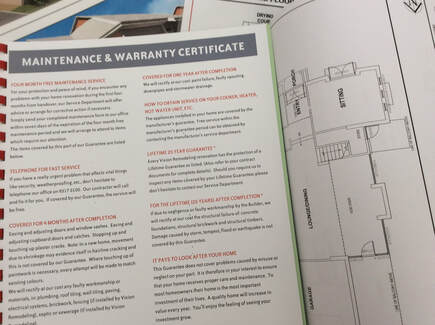





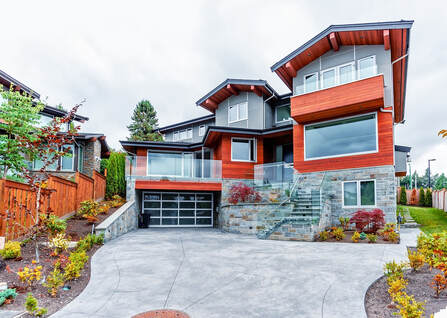
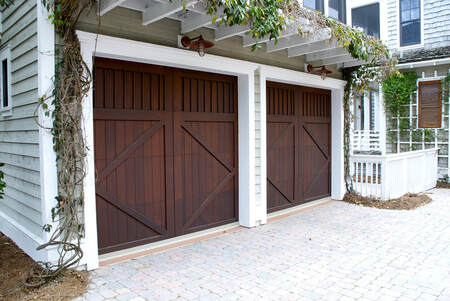
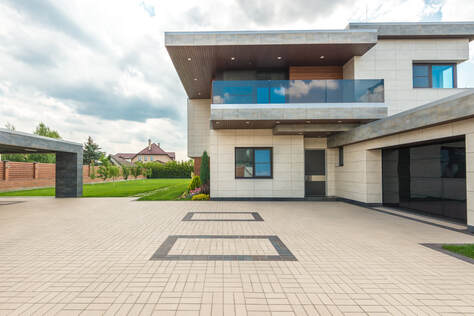
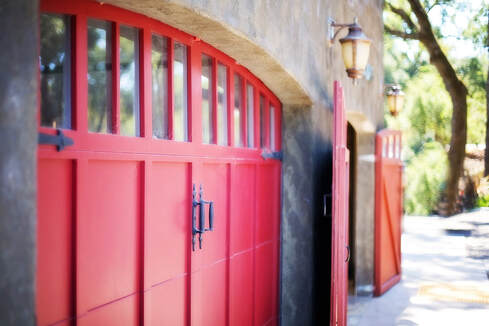




 RSS Feed
RSS Feed


